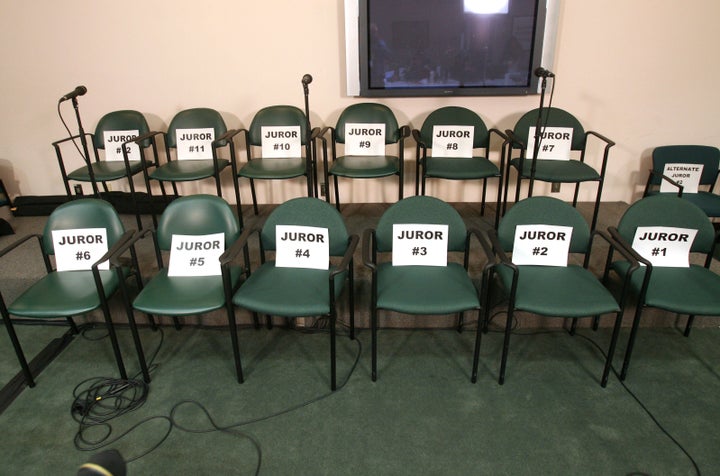
The jury in the Casey Anthony trial was not instructed that circumstantial evidence is entitled to the same weight and consideration as direct evidence. Indeed, the words "circumstantial evidence" do not appear anywhere in the court's charge to the jury. I do not know whether or not the prosecution requested such an instruction, but the court did not give it, and apparently Florida law does not provide or require it.
The fact that Casey Anthony was the last person to have custody of her daughter, failed to report her missing (or dead) for 31 days, consistently lied once confronted, and the child was found dead and hidden, and she failed to tell what actually happened despite repeated opportunities to do so to her family, friends or law enforcement, (even when faced with the death penalty) was sufficient to find her guilty -- not necessarily of premeditated murder, but certainly all lesser charges. The duct tape and other forensic evidence provided additional, but not necessary, evidence.
Jury charges are invariably long and complex and difficult to understand. The courts have been struggling for years to make them shorter and simpler. Pattern and model charges are common in many jurisdictions. In the process some essential instructions may have been deleted. Traditionally, jury instructions contained language along the following lines (excerpts from a Connecticut model instruction):
There are, generally speaking, two kinds of evidence, direct and circumstantial. Direct evidence is testimony by a witness about what that witness personally saw or heard or did. Circumstantial evidence is indirect evidence, that is, evidence from which you could find that another fact exists, even though it has not been proved directly. There is no legal distinction between direct and circumstantial evidence as far as probative value; the law permits you to give equal weight to both, but it is for you to decide how much weight to give to any particular evidence.
Circumstantial evidence of an event is the testimony of witnesses as to the existence of certain facts or evidence or the happening of other events from which you may logically conclude that the event in question did happen. ***Assume that it is a December night, the weather is clear, there is no snow on the ground, and you retire for the evening. You wake up the next morning, you look out the window and you see snow on the ground and footprints across your lawn. The evidence that the night before there was no snow on the ground and the next morning there was snow on the ground and footprints across your lawn is direct evidence. That direct evidence, however, is circumstantial evidence of the fact that some time during the night it snowed and that some time thereafter someone walked across your lawn.
There is no reason to be prejudiced against evidence simply because it is circumstantial evidence. You make decisions on the basis of circumstantial evidence in the everyday affairs of life. There is no reason why decisions based on circumstantial evidence should not be made in the courtroom. In fact, proof by circumstantial evidence may be as conclusive as would be the testimony of witnesses speaking on the basis of their own observation. Circumstantial evidence, therefore, is offered to prove a certain fact from which you are asked to infer the existence of another fact or set of facts. Before you decide that a fact has been proved by circumstantial evidence, you must consider all of the evidence in light of reason, experience and common sense.
Obviously I cannot be certain that such an instruction would have made a difference. However, the few tidbits received from jurors seem to suggest that the lack of direct evidence of guilt was the prime factor in their verdict. Although many, if not most disagree with the verdict (myself included), neither the jury nor the court can be faulted. The jury followed the law as given, and the judge instructed the jury as required. Nor can I find any fault with the prosecution team, which in my opinion, performed with great competence and integrity. I cannot lavish such praise upon defense counsel, but I suppose their victory for their client moots any criticism of their tactics -- a subject possibly for another day.
In my more than 50 years in the law I personally experienced disagreement with a jury verdict twice -- once as a trial lawyer and once as a trial judge. Practically everyone reads or hears about verdicts with which they disagree. I know I do. But with minor, but sometimes very serious exceptions in both findings of guilt and acquittal, the system works well and the jury gets it right. Nothing could be worse than to harass or threaten jurors for their verdicts. Jury service is both a duty and a sacrifice; no one should be condemned for pursuing their conscience.